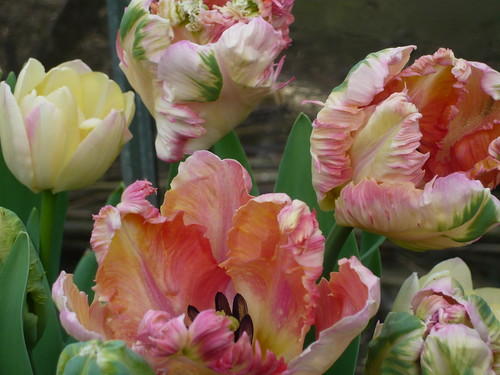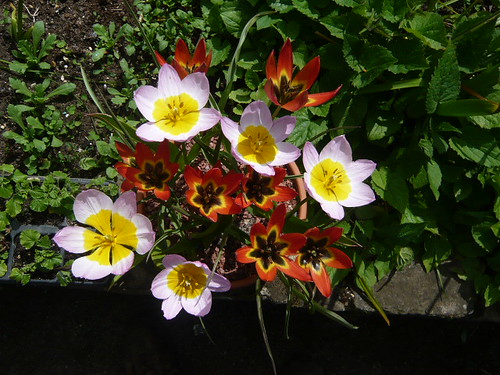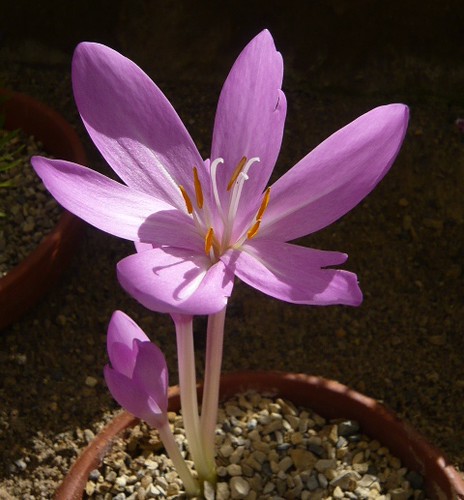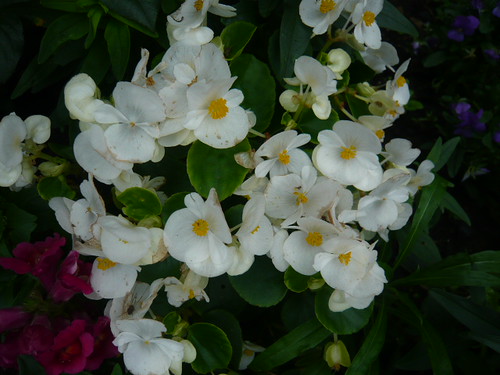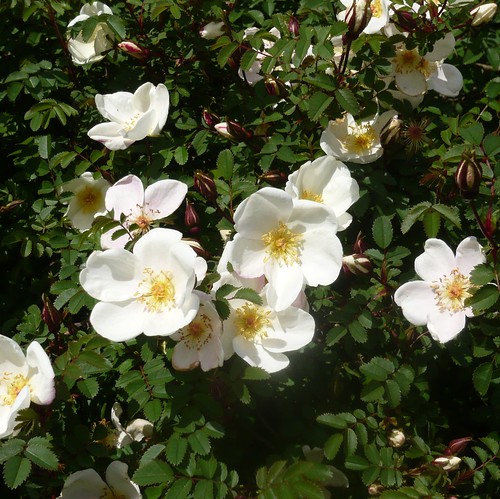Rhus typhina Sumach and Autumn Colour
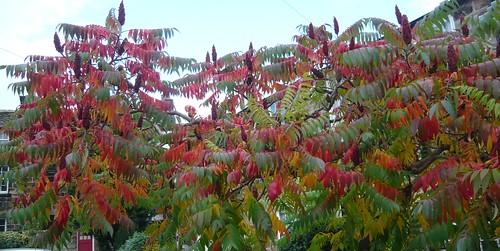
This autumn tinted, small tree, Sumac or Sumach is also called the ‘Stags Horn’ or botanically Rhus typhina.
Rhus Facts and Tips
- Trees can grow up to 25 feet high, this specimen is only a third of that. Early pruning may have stunted the height and encouraged the large canopy.
- Branches fork freely and are covered with thick velvety hair when young.
- Leaves divide into narrow oval, toothed and softly hairy drooping leaflets. The leaves are bright orange and red  colours in autumn.
- Male flowers are greenish and female are red blooming on different trees
- The cone-shaped, dull red, hairy heads remain on the tree throughout winter.
- Take care when touching the leaves and stems as the sap can be an irritant.
See picture of Sumach in spring
